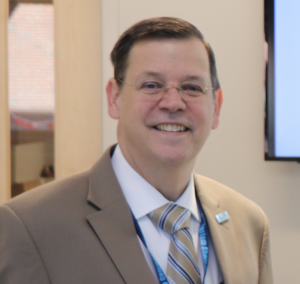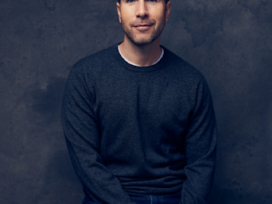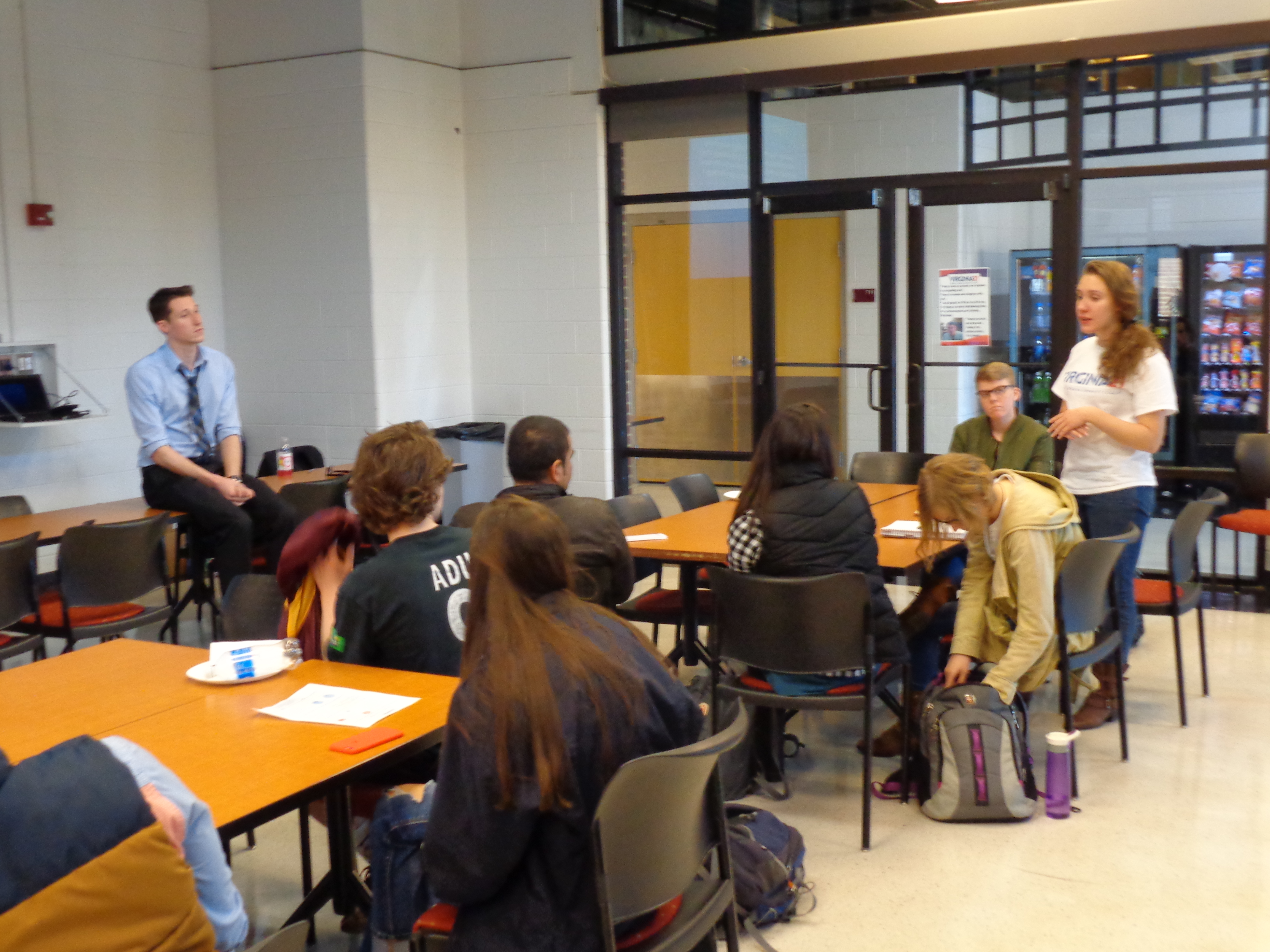
Student Forum: Dr. Patrick Tompkins
The search for PVCC’s new college president has begun in person at PVCC. The first finalist to arrive at PVCC, Dr. Patrick Tompkins, spoke to students and faculty at the student forum. The event was April 4 and started at noon in the Bolick Student Center.
The student center was arranged with neat lines of orange-red chairs and interested people as Tompkins began the student forum on April 4. Before the forum started, Tompkins talked with several people in the scattered audience.
Tompkins got his start in education teaching as an associate professor at John Tyler Community College in 1993. He was previously the dean at Thomas Nelson Community College from 2013 to 2018 and then provost at the Historic Triangle Campus. Since then, Tompkins has been the vice president of academic, student and workforce education at Eastern Shore Community College in Virginia. He earned his bachelor’s degree from Villanova University, a master’s degree from Iowa State University, a master’s degree of fine arts from Virginia Commonwealth University, and a doctorate from Old Dominion University.
There were 11 preset questions for Tompkins that were passed out for the audience to ask him. Once those questions were worked through and talked about, people asked additional questions that they wanted him to answer.
Tompkins explained that he started as a teacher and only began management after other people told him he had a talent for it. He said, “Leadership is teaching,” and if someone has the talent for it, they should use it.
To Tompkins, the president’s job is not just about administrative duties, it is also about setting the tone for the college. “The president doesn’t just run the college. The president leads the college,” said Tompkins. To him, this means it is not solely about managing, but about creating a culture at the school that the president works to maintain.
“Piedmont, when we look at the staff, it’s gotten more inclusive, but it doesn’t really reflect the student population at Piedmont, and we don’t get there by just saying we need to be more diverse, and we don’t get there by just trying to hire people for diversity; it’s about creating a culture,” said Tompkins
“Leading is about setting the tone,” he said. He does not want to tell people to be more diverse, but instead he wants to have a culture of diversity and inclusion. He said, “We are in a people business,” inclusion, hospitality, and transparency are extremely important.
Tompkins expressed the importance of having students back on campus, as well as providing accessibility to campus resources. He said providing those resources increases a student’s chances and ability to graduate. Even before COVID-19 lockdown and the widespread use of digital learning, he believed it was important to have access to broadband.
“We have locations where students can see an individual and get that personal help, so I’m curious as to what’s going on in those rural areas and if there is an opportunity for the college to have an actual physical presence in some of those areas,” said Tompkins. “I had a conversation with the president’s cabinet, and one of the things I said was we need students back on campus, we need students engaged, … we need college to be a fun place. What we know about higher education is the more time you spend on campus, the more successful you will be.”
Tompkins suggested that the college focus on high-demand degrees such as those in cybersecurity and tech fields. Tompkins said, “Cybersecurity is now more important than ever. What about blockchain? Are we doing anything related to blockchain and crypto?”
Tompkins conveyed the necessity of ensuring that community college degree programs remained relevant to the current job market and that they had a reasonable graduation and job placement rate. He said, “There are a couple of programs here that did not have a single graduate last year; why not? Why are people not graduating from the program? Is that program obsolete? … You have to look at those programs and see that people are spending this time and this money, accruing debt, and they’re not getting a job.”
As the audience asked questions, Tompkins made an effort to ask each person’s name that spoke up, and sometimes he had follow-up questions on what they said. As he talked and listened, he slowly paced between and in front of the audience leaving the throne-like chair in the back alone.
“I already know what I think,” he said. Instead of collecting people who think the same, he said he wants to know what other people think. We need to “learn how to disagree,” he said. Saying that as a society we are losing the culture that allows disagreement and honest discourse. He said that both Democrats and Republicans alike are not helping this problem. Instead of having a side that is right, he said there needs to be thorough and thoughtful conversations happening.
Feedback was welcome and asked for after the student forum ends. A QR code was passed around to submit feedback and is due at 5 p.m. the following day. This feedback is not the deciding factor on who the next president will be, but it will be looked at to help judge the finalists.
The next student forum was held on April 6, again during college hour. At that forum Dr. Julie Leidig talked and answered the same set of 11 questions as Tompkins. Leidig is the provost of the Loudoun Campus at Northern Virginia Community College and Aspen Presidential Fellow.
More information about all of the presidential candidates can be found at https://www.pvcc.edu/presidential-search-0 along with their itinerary. On April 11, Dr. Jean Runyon will hold the next student forum, and the final forum will be on April 13 with Dr. Walt Tobin, both at noon in the Bolick Student Center.






